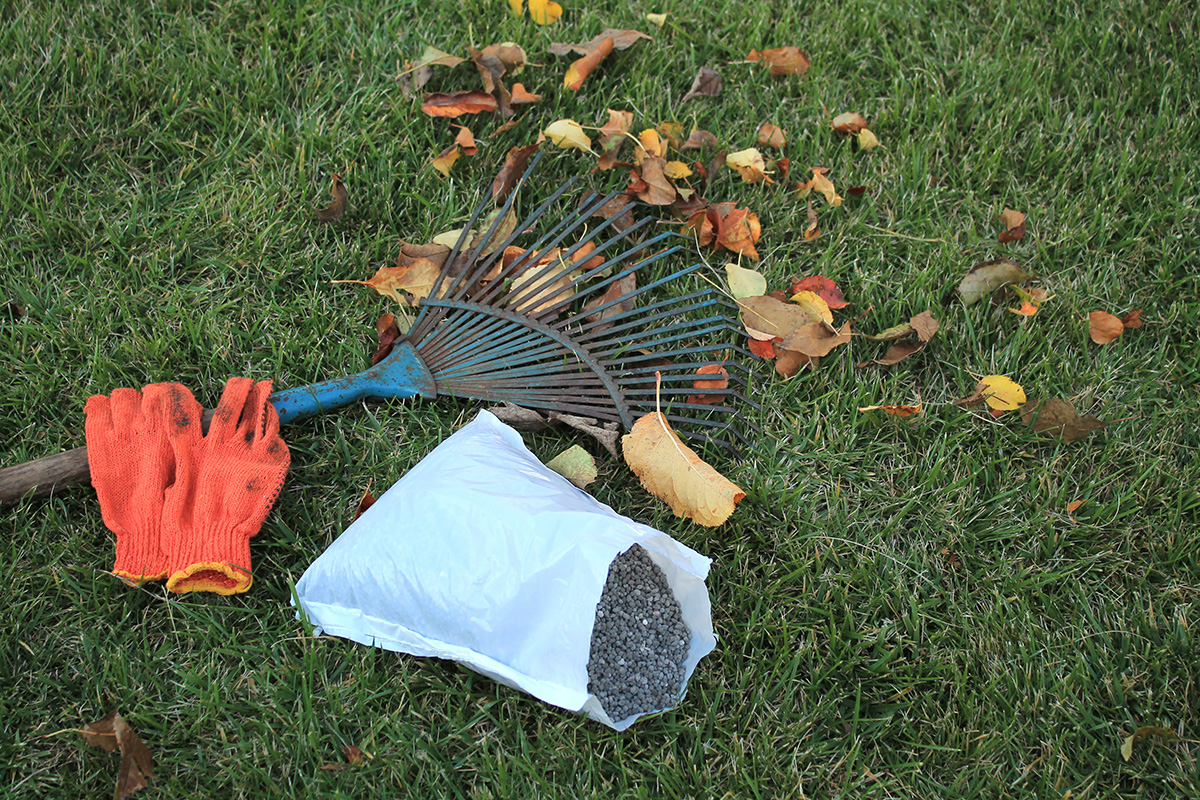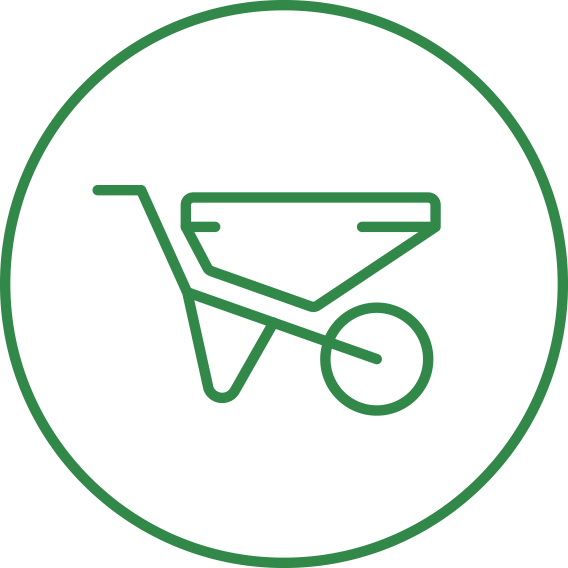Understand Fertilization Basics
To use fertilizers appropriately while saving money and reducing water quality impacts from nutrient runoff, consider the following strategies.
Test your Soil
While it may seem trivial, soil testing is perhaps the most valuable tool for maintaining a sustainable landscape while also protecting the health of our lakes and streams. For many, fertilizing is done on autopilot—twice a year, with one application in spring and another in fall. However, many soils in the Midwest already contain enough phosphorus to support a healthy lawn. One way to find out for sure is to do a soil test. Soil tests can help you understand what nutrients (e.g., phosphorus) are present in the soil and if additional nutrients need to be applied for a particular area in your landscape. Check with your nearest university extension office to find out where testing services are available, or check out the Lawn to Lake Soil Testing Lab map.
Know When to Apply
If your soil test indicates that you need to apply fertilizer, September and November are the two best times to fertilize your lawn. An application of nitrogen fertilizer in the fall promotes good root development, enhances your lawn’s energy reserves, and extends color retention. The benefits will be seen in the spring with earlier green-up, better turf density, and improved tolerance of turf diseases.

The best time of year to fertilize in the upper Midwest is in the fall. | Photo Credit: Shutterstock
For the September application, pick a product that contains some quick and slow-release nitrogen. The September application can be performed any time of the month after the daytime high temperatures are no longer beyond 90°F. The target application rate for this fertilization should be 1.0 pound N/1000 square feet.
The November application timing should be near or after the last mowing of the year, but while the lawn is still green. Typically, there may be a month or more between your last mowing and the time the grass turns brown or goes under snow cover. Generally, the first few weeks of November are when to apply. Research suggests that the nitrogen must be taken up by the plant before winter to be most effective. Therefore, a quick-release (or soluble) nitrogen source such as urea, ammonium nitrate, calcium nitrate, or ammonium sulfate is most effective. The target application rate should be 0.5 to 1.0 pound N/1000 square feet.
Prevent Fertilizer Pollution
Never apply fertilizer if moderate or heavy rain is forecasted for your area within the next 24-48 hours. Heavy rains can quickly carry fertilizers in runoff to nearby storm drains or waterbodies. If you live next to a lake or stream, do not fertilize within 25 feet of the water’s edge. Make sure to sweep up any fertilizer that gets spread onto the sidewalk, driveway, or curb. Some spreaders have helpful guards that prevent application onto non-target surfaces.

Sweeping excess fertilizer off of hard surfaces and back onto the lawn minimizes waste and ensures excess doesn’t pollute your watershed. | Photo Credit: Janice Milanovich, Illinois-Indiana Sea Grant
Read and Follow the Label
If your soil test results indicate that your lawn has a nutrient deficiency, make sure that you purchase the correct fertilizer to address that deficiency. All bags of fertilizers will have a label showing the nutrient analysis. It will have three numbers, such as 22-0-15, which correspond to Nitrogen-Phosphorus-Potassium or N-P-K. Nitrogen (N) is important in overall plant health. Phosphorus (P) is integral in root formation. Potassium (K) regulates water movement. Remember, most established lawns in our region do not require added phosphorus. You can make sure by doing a soil test. If this is the case, look for a fertilizer with a zero value in the middle of the nutrient analysis (N-P-K), which means it is phosphorus free.

Ensure proper fertilizer use by carefully following directions. | Photo Credit: Irene Miles, Illinois-Indiana Sea Grant
Make sure to follow the directions on the label. Over-applying fertilizer can burn your lawn and cause nutrient pollution run-off when it rains.
The label will provide information about how much fertilizer to apply based on the square footage of your lawn and your soil test results. You can skip the math by using the Lawn to Lake Fertilizer Calculator.
General safety and disposal information.
If you need to dispose of any of your lawn chemicals, check with your county’s solid waste district to see if they have a Hazardous Household Waste Disposal Day or collection event coming up in your area. For many, these events provide safe chemical disposal for free.








